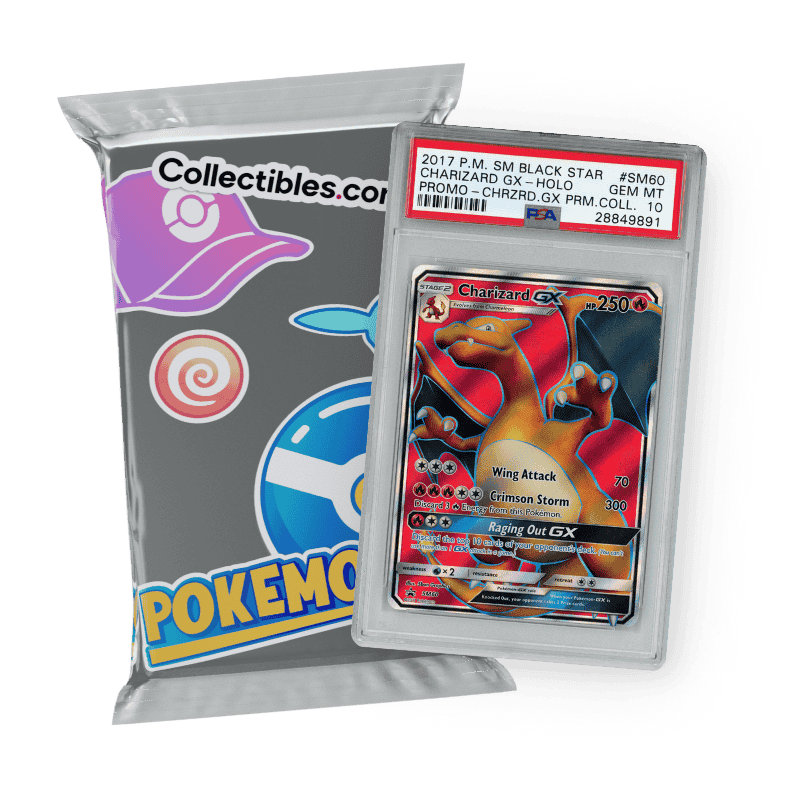
Leap of Faith: The Importance of Trust in the Hobby
As much as our collections are about the actual cards and memorabilia, this is really a hobby based in trust. Can I trust that vintage card is real? Can I trust that autograph is authentic? Can I trust the person I'm working out a trade with on the message boards is going to send me the cards? Can I trust this auction house isn't going to drive up prices on their own? You could go on and on.
If any of these trusts are broken, chances are collectors are going to walk away.
This week, it was discovered that several patch pieces from 2014 Flawless Football came with event-worn jerseys rather than game-worn swatches like the cards say. And while the total number of affected cards is relatively small, that's not the point. The fact that it happened in a product that's over $1,000 a pack isn't the issue either (although that does make it sting a little more). The point is that, it happened. It doesn't matter if the issue was just one card in the cheapest product or, as we have here, dozens of cards in an extremely expensive product. Even if not intentional, a trust was broken.
Sadly, this isn't the first time in the hobby mistakes have been made. It won't be the last.
And at what cost?
The majority of us don't have any of the Flawless cards in question. That doesn't mean that it only impacts those few, though. I think it's safe to say that over the last few days a lot of us have questioned the origins of the swatch in the card sitting on our desks or the one that you have on your eBay watch list. A mistake with one set has raised questions that impact the entire industry.
Broken Trust
Not long ago, my eight-year-old son, a non-collector, saw a memorabilia card and asked me, "How do you know that player wore that jersey?" Smart kid. In most instances, the only answer is faith and trust.
We don't see the jersey on the player's back. Most of the time the swatch is small and hard to discern from which team, let alone which player. And yet memorabilia cards continue to be a focal point of the hobby -- even when they're just player-worn and not game-used. That's because of trust. When we spend our money, we're taking a company's word for it.
In the Flawless instance, Panini is taking measures to fix the issue. Exchanges, buying back the cards outright and making replacements are among the possibilities. Above that, they say they're looking at some of the bigger issues that come to light when something like this happens.
At this point, it's just words to a lot of collectors. Hopefully they've earned enough trust in the past for enough collectors to keep the faith. Judging from many of the comments I've read, it's not enough for some. They say they're moving on. Again, it's words.
It's easy to point fingers at how messed up the situation is. Even Panini has admitted that. Multiple mistakes were made. Big mistakes.
How do we know that similar mistakes haven't been made before by any of the card manufacturers? There are millions of memorabilia cards out there. Are we to believe all of them are exactly as advertised?
Actually, the courts have stated they aren't. Card companies have bought fraudulent jerseys in the past. As part of a case, Panini even acknowledged in a Victim Impact Statement that they had records of items that were bought by Donruss/Playoff from a now-convicted dealer. Donruss/Playoff was later purchased by Panini so you can't blame them for the purchase. However, a list of potentially affected cards has yet to be made public. So it's very likely there are cards out there with fake swatches but collectors don't know which ones.
But if there's a list out there, why don't we know?
Playoff/Donruss (and therefore, Panini) wasn't the only company who bought bogus gear either. Yet, to date, not one card manufacturer has stepped up and publicly acknowledged there was a problem with the memorabilia used in some of their cards.
The "as advertised" is part of the issue too.
When memorabilia cards first came out, companies were very definitive about them being game-used and from a particular part of gear. Over time, a lot of that language has become increasing vague. We've gone from jerseys and bats to a much more generic "relic," which can encompass just about anything. What used to be a jersey swatch may or may not now be pants. And when something's "game-used," who's to say when that game took place? Was it a regular-season tilt or an exhibition game? I'm not calling for every swatch to be dated (although it would be nice and help build greater trust), but it shouldn't be too much to ask for a rough idea of what sort of game.
Current practices make this tough. Sometimes the same card will have two types of relics across a print run. That makes it tough to say definitively whether it's a jersey piece, a bat, or a piece of pants when it could be any on a given card.
But I'd argue this is a systems issue. The current way of doing things is efficient and, therefore, more profitable. Having more defined cards and a new system would come at a cost. But so does the loss of trust when something goes wrong.
Autographs aren't immune to mistakes either. In just the past couple of years we've had athletes use autopens and even rubber stamps.
And how do we really know that every autograph is signed by the subject?
Trust.
We're told the signings are witnessed by company representatives. Those that aren't come with signed affidavits from the signer and a witness, usually their agent. To break those agreements and legal documents would be stupid for an athlete or celebrity. But if you turn on the TV right now, you probably won't have to wait for long to hear about someone famous doing something boneheaded. We're human. We make mistakes. Some are just bigger than others.
And what about all the fraud in the realm of high-end sports memorabilia? People have been swindled out of millions of dollars buying bogus stuff or paying more than they should have thanks to shill bids. Even the holy grail of them all, the Gretzky Honus Wagner, has proven to be not all it was claimed to be. There was always controversy surrounding The Card. Yet, it kept hitting record prices. But the trimming became more than rumor when Bill Mastro admitted to doing the deed. Now it's fact.
Broken trust can reach the opposite end of the hobby as well when collectors rip off each other. The first time my trust in the hobby was broken was when I was seven- or eight-years-old. A kid I grew up with (it was one of those my mom was friends with his mom so we were friends kind of arrangements) stole my stack of 1985-86 O-Pee-Chee Hockey cards. At the time, I didn't care about what a rookie card was, let alone Mario Lemieux. But that didn't mean I didn't love them. And they were gone, taken by someone I'd grown up with. It would be a few more years before I bought any more hockey cards.
It's sad when you go to a message board and there are lists of bad traders and banned members stickied to the top of a thread. But it's a sad reality that some openly break trust with other collectors.
It's up to us to decide if mistakes are going to happen again and whether we're willing to live with it. And if we are, to what degree?
Rebuilding Trust
Fessing up and offering a solution is a solid first step in rebuilding faith. What's bigger is to actually see how things are going to change. Saying you're going to talk about it isn't enough. That will take time and patience. As collectors being asked to buy products regularly, how patient can we be though?
Trust really starts to rebuild with action.
Action stemming from a bad situations can actually make things better. If you're in a relationship and things go sour, you can leave the problems and probably walk away. Or you can work though them and come up with solutions. Over time, this can actually make for a deeper relationship.
The hobby is like a relationship now. It's a fraction of the size it was 25 years ago. That means collectors can interact better with each other. It also means that companies should be reaching out to collectors more. Does it happen? Yes and no. Like anything else, it could be better.
But if the card companies want to succeed in the smaller market, they need to look at themselves as connecting with their customers. They need to work at it, communicate, take feedback and be up front. With the rise in social media and the Internet in general, I'd say it's getting there. We might not get all the answers we're looking for. It might take multiple emails or an excruciatingly long one-way conversation with David Wright to get through to a real person. It can frustrating.
Ultimately, it comes down to that trust thing again. If you find your faith is wavering, no matter the size of the issue, you're going to look for answers. If the other party isn't willing to offer them, then that relationship runs a real risk of ending. It's no different than a relationship with a friend, girlfriend, boyfriend, wife or husband. For a relationship to work, there needs to be mutual work and trust. And when that happens, so do deeper bonds.
The hobby has seen plenty of mistakes, fubar moments and outright fraud. It would be naive to think this hasn't hurt the industry.
It has.
And each ensuing mistake can make it worse if things aren't dealt with appropriately. Those responsible need to be held accountable. Systems need to be adjusted. Questions need to be asked. And if the answers are satisfactory, trust can start to be restored -- maybe even stronger than before.
Maybe.
And hopefully before it's too late for many more.
 | Making purchases through affiliate links can earn the site a commission |

































Mike Pereira
I wonder if this patch problem didn’t happen in a super high end product that it would have blown over on the next news cycle. Thank god it did, because the bigger problem collectors are mad at is not that they were mislabeled but that Panini wanted to use those gimmick “event worn” patches in a super high end product. I’m so happy collectors are voicing their opinion on the growing issues with quality of product being related to the cost of the product. Who will get excited when they put down $1000 for a pack of 10 cards and get an “event worn” patch that they can get in $80 product. Every collector knows how manufactures get “event worn” patches and to sell it to collectors as memorabilia is a slap in our face. What is so memorable about a player wearing a jersey for 15 minutes while they sign a thousand lazy squabbled autographs? Three biggest problems in the hobby I think are “event worn’ patches, the excess amount of products and rookie autos that look like their trying to draw something or just lazy initial autos. I’m sure that they sign their names alot better when they sign that check they get from the manufacture for those autos.